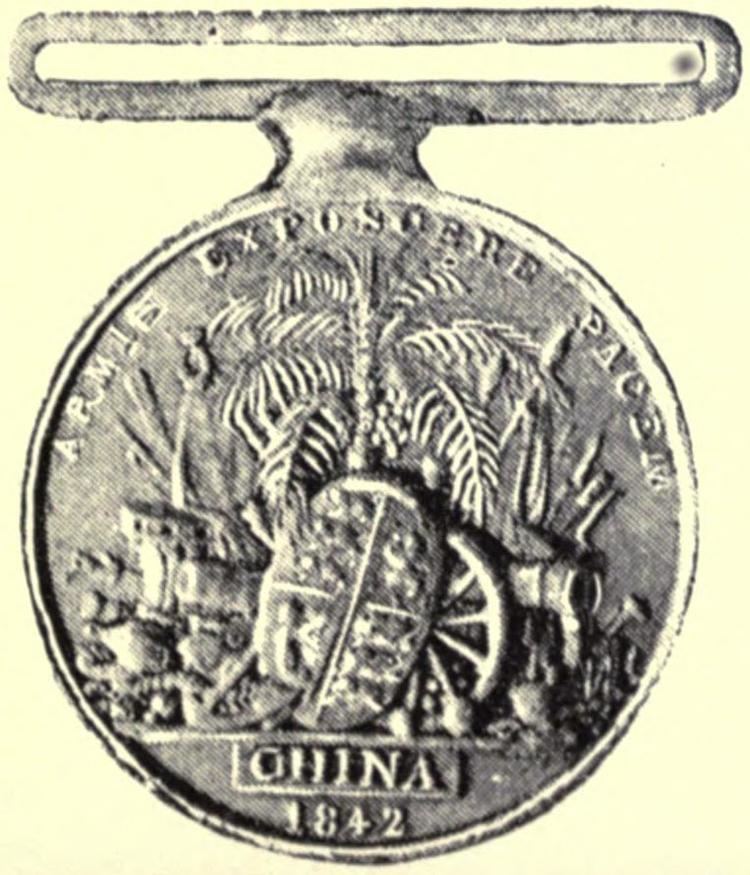Awarded for Campaign service | Eligibility British forces Established 1843 | |
 | ||
Campaign(s) First Anglo-Chinese War (1839–42) Description Silver disk, 36mm diameter. | ||
The China War Medal was issued by the British Government in 1843 to members of the British Army and Royal Navy who took part in the First Anglo-Chinese War (1839–42). The medal was designed by William Wyon.
Contents
Recipients
The China War Medal was originally intended by the Governor-General of India, in October 1842, to be awarded exclusively to all ranks of the Honourable East India Company's Forces. Instead, in 1843, under the direction of Queen Victoria, the British Government awarded it without clasp to all members of the British Army and Royal Navy who had "served with distinction" between 5 July 1840 and 29 August 1842 in the following actions :
This campaign became known as the First Opium War, ending in the seizure of Nanking. The resultant treaty opened five ports to trade, and ceded Hong Kong to Great Britain.
Description
The medal's obverse shows the diademed head of Queen Victoria with the legend "VICTORIA REGINA". The reverse has the same coat of Royal Arms and shield found on both the First, Second and Third China War Medals with the inscription "ARMIS EXPOSCERE PACIM" and the word "CHINA" and the date "1842" in the exergue below. The First China War Medal's reverse was originally designed depicting the British lion devouring a Chinese dragon. However, this design was considered too insensitive to the Chinese and so the reverse described above was used. The non-swivelling suspender is plain and straight being sweated directly to the medal.
The medals were named in bold block capital letters with stars used to fill in the spaces as on the Waterloo Medal. However, since new punches were used for this medal the naming appears somewhat sharper than on Waterloo Medal examples.
Those in receipt of this medal and who also qualified for the Second China War Medal in 1861 were supposed to receive the clasps awarded with the second medal only. These clasps were intended to be fixed to this medal but due to the difference in the width and style of the suspender it was not known how this was actually to be done. As a result, the clasps were often simply slipped over the ribbon which was sometimes replaced with the narrower 32mm type supplied with the second medal. Other recipients of this medal removed the original suspender and replaced it with one similar to that found on the second medal.
